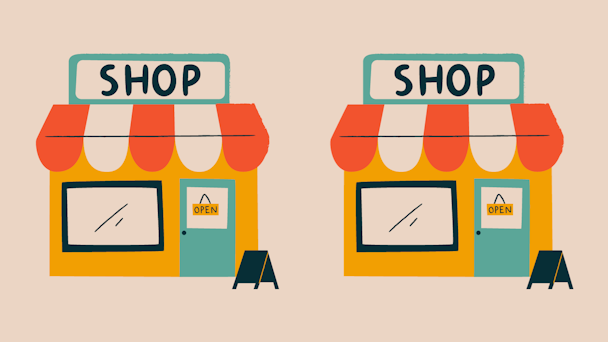The path to retail media growth for many doesn’t mean copying the Amazon model
Sam Knights, CEO of SMG, looks at the growing number of retail media outlets and urges them not to copy Amazon.

The path to retail media growth for many doesn’t mean copying the Amazon model. In the US, it is predicted that Amazon will account for $23.95bn of the total $29.69bn US retail media search ad spend market this year. While digital retail media investment dominates the picture and plays a huge role in enhancing both retailer and brand performance as well as customer experience, its dominance clouds the true potential of retail media.
Amazon’s pioneering approach to digital commerce and ability to deliver at speed and scale to consumers has, in many ways, set the template that other retail brands are seeking to replicate. And, in some ways, that’s quite right. But here’s the thing. Most other retailers have a very different model to Amazon, doing more business through their brick-and-mortar operations. They have a far bigger media audience in and around their stores than they have online.
In the US, investment in retail media has been heavily skewed to digital estate enhancement, and indeed the US is ahead of the UK generally in digital sophistication. And yet, most retail brands in the US have bigger audiences across their physical environments than their digital ones.
In the UK, across all categories, digital commerce is just over a quarter of all retail sales, according to recent ONS figures for September. For grocery, it stands at 8.8%.
Advertisement
Yes, digital retail media is hugely important as a performance driver. Continued enhancement of digital networks, data optimization and a drive for uniform measurement, as well as easier access to the multiplicity of opportunities, will continue apace.
But from a development point of view, the message for retailers and brands investing in it is clear – the big opportunity for growth and performance enhancement sits in omnichannel activations. Campaigns that happen around stores, not just online.
Shoppers have changed the nature of advertising
SMG’s own research suggests that consumer behavior is blurred across digital and in-store. A minority 12% just do digital shopping. Meanwhile, 45% just shop in-store. But 43% of the shoppers we talked to do both.
Shoppers want a seamless retail experience, and they expect seamless communications that are contextually relevant, enhancing their ability to shop and their enjoyment of the process. They don’t think about touchpoints.
Advertisement
Since SMG launched 15 years ago, the shopper mindset has changed beyond recognition. What we’ve seen over the years is the gap between a mindset receptive to brand messaging versus the shopper mindset (being ready to buy) narrows significantly. Where brands used to create fame through marketing at the top of the funnel to increase conversion further down, by habituation, the gap between brand messaging and action is far closer for many categories – big ticket items obviously tend to be researched and are a slower burn.
But for many categories, the ability to research or see a suitable or attractive product or brand, buy it in a matter of seconds, and receive it within a day or even hours has changed our customer experience expectations radically. And the proximity of brand communication to the point of purchase is naturally true in-store.
Suggested newsletters for you
And so, our experience of brand impression to brand purchase has crunched. It means we are more open to new or different brands and, of course, price promotions. The evolution of the traditional path to purchase is matched by the increasingly complex web of influences across our customer journeys.
The wind-down in third-party cookie usage over 2024 will bring all of this into sharp relief for many brands. The ability to get close to the shopping action and retail media’s ability to offer a closed-loop of optimization and measurement fuelled by first-party audience data is a powerful driver behind retail media’s incredible growth.
The in-store half of omnichannel
There’s a big difference between multi-channel retail media campaigns and true omni-channel retail media.
The integration of CTV, digital radio, social, digital commerce, out-of-home media around stores and in-store promotional marketing, in-store brand marketing, point of purchase and post-purchase communications presents the full, current circle of omni-channel. But only if you join those dots seamlessly and design your media and creative activity across them to best match your specific brand needs and how to enhance people’s day.
Finessing the omni-channel experience remains a challenge for a lot of retailers, and many currently do not have the capability to funnel campaigns across multiple channels flawlessly. With brands increasing their store count – Poundland and Asda, to name a couple this month - retailers must also meet the in-store expectations of the consumer if they are driven there through social or online targeting.
One of the best examples of who does this well is Boots. By using the data from its 16m advantage card customers, Boots enables the brands it works with to reach the right audience through the right touchpoints, whether social, digital, TV (the retailer recently partnered with Channel 4) or in-store. Its advantage card enables this consumer savviness, making advantage card holders x1.7 more likely to consider a brand following a Boots media experience.
The beauty of customer loyalty schemes like Boots’ is that they create a more articulate picture of consumer wants/needs every time they buy with a loyalty card, making targeting more granular, translating to offers the consumer can actually benefit from.
The tech behind commerce strategies can be leveraged in-store to enhance the physical shopper experience and blend it with what they’ve seen online. Already, stores are becoming a hybrid digital-physical media entity through the use of beacons, QR codes and geolocation tech, which allow brands to map progress around stores and provide customers with personal offers and discounts - integrating behavioral data with loyalty and promotional marketing and then feeding it back to into the loop of digital commerce and other media.
Closing the gap between online and the spaces in and around stores, which are being transformed by new innovations, is the gateway to scaling incremental investment in retail media and optimizing campaign performance.
Amazon looms large in retail media for obvious reasons. There is much to learn from it. But the path most retailers, and by implication, brand advertisers, should follow to maximize their retail media potential is very different.

